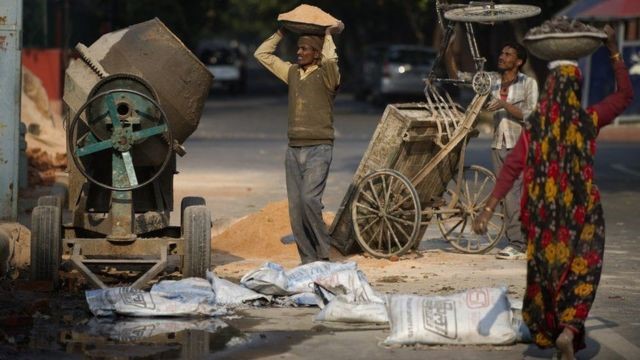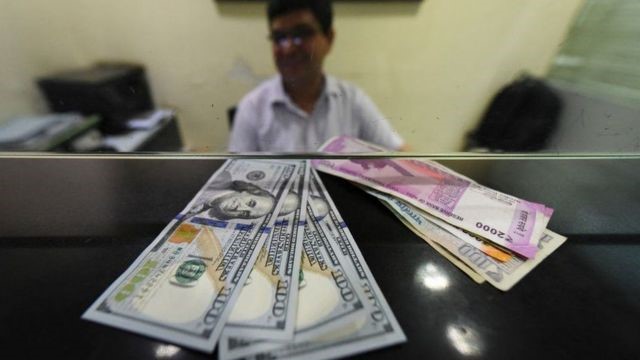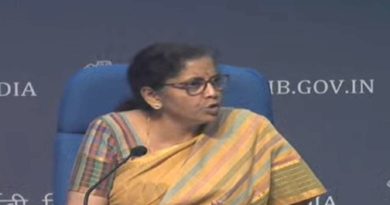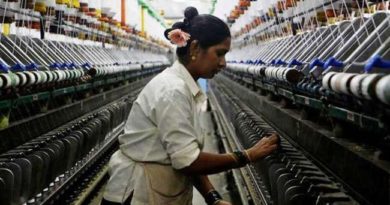Corona Crisis: Can India’s economy be improved by printing new notes?
There is a constant discussion on measures to bring the economy devastated due to the Kovid epidemic back on track, but the measure on which there is a difference of opinion is whether the Reserve Bank should print more notes or not.
Many times monetary measures are taken to bring balance in the economy, printing more notes is called ‘quantitative easing’ in technical language, broadly it means to increase the availability of money.
This method has been adopted in many countries of the world, the Federal Reserve of America has used this method successfully in recent years, but in countries like Venezuela and Zimbabwe it has had very fatal consequences.
Last week, Uday Kotak, one of the country’s top bankers, said in an interview that there was a need to print notes to support the economy devastated by the second wave of the Corona epidemic.
The responsibility of printing notes in India lies with the Reserve Bank of India (RBI) and this process also includes the advice of the government.
Economic Development
The CEO of Kotak Mahindra Bank argued that note printing needs to be done at two levels. First, for the lower strata of the economy and second for job security in the areas affected by the pandemic.
He said, “In my view, it is time to expand the balance sheet of the government, in which RBI can help. Do something for monetary expansion or printing of money, if not now then when?”
According to RBI officials, Governor Shaktikanta Das does not feel the need to print currency at the moment, some people think so, but according to Shaktikanta Das, there is a fear of increasing inflation by doing so, which can hurt economic growth.
An official associated with the Reserve Bank said, “Too much money supply will increase inflation. In addition, if the government considers printing notes, there will be uncertainty in both the money and debt markets, there will be a massive devaluation of the currency.”
Economic World Divided
The risk of rising prices and the risk of devaluation in the real value of the currency is often expressed due to the sudden influx of large amounts of cash from reserves in the market, but some economists believe that this is true in normal circumstances, but At this time the country is not going through a normal situation.
The economic world is divided over printing currency. The condition of the economy is so bad that many experts say that this is the right time for RBI to print currency. Some other experts argue that there is no shortage of liquidity in the market, so the risk of increasing inflation should not be taken by printing extra notes.
According to Vijay Bhambwani, a well-known personality of the Mumbai stock market, the decision to print currency should be taken as the last option, “The use of note printing will be appropriate when there is no other option left.”
According to Vivek Kaul, an expert on economic matters and author of the book ‘Bad Money’, it is not true that RBI is not printing money, the method is indirect.
He says, “RBI has said that it will buy government bonds worth Rs 2.2 lakh crore between April and September this year, how does it buy those bonds? It prints notes, that’s how any central bank prints notes and pumps it into the economy, therefore, RBI is already printing notes, it printed notes last year also.”
The government generally runs many economic schemes for which it needs money. It now needs manifold more money to deal with the pandemic.
According to Vijay Bhambwani, the areas affected by the epidemic that need financial help are healthcare, restaurant business, many economically affected areas and the poor people who are directly benefiting.
‘Schemes need a lot of money’
Apart from this, he says that the government is already obliged to give money in many schemes, “We have already implemented schemes like NREGA (National Rural Employment Guarantee Scheme), FSB (Food Security Bill), PDS (Public Distribution System). State governments are also giving free food to the weaker sections of the society. Direct cash transfer can be done to the needy through Jan Dhan accounts.
Obviously, all these schemes require a lot of money, where does that money come from? Or can you come? One lakh crore rupees are coming into the government treasury every month continuously for the last few months from GST.
Vijay Bhambwani says that the RBI has already transferred more than Rs 99,000 crore in cash under a special provision to the government treasury.
Disinvestment of shares of government companies and privatization of some PSUs can also raise funds for the government. About one lakh crore rupees are expected to be raised from LIC’s IPO. BPCL and some other companies are next in the list.
Money in Government Treasury
The Modi government has announced to raise Rs 12 lakh crore from the bond market, which will bring more money to the government’s treasury, so in this way the government can raise as much money as it wants to spend. Perhaps that is why many people, including the Governor of RBI, oppose the advice of printing notes.
Apart from this, the money of banks is deposited with RBI. Banks have deposited the remaining money back into the account of RBI after giving loans to businessmen and industries, and at present, more than Rs 5 lakh crore of bank money is deposited with the RBI.
According to RBI, if there is a situation of excess money coming into the market, then there is every possibility of increasing inflation.
Vivek Kaul says that since 1997, the Reserve Bank is not allowed to print money and hand it over to the government for spending directly, but no one can stop it from doing so indirectly.
Financial System
He says that RBI is still printing money for the government but not directly. He says, “When the RBI prints money and buys government bonds, the money supply in the financial system increases. And given this, banks, insurance companies, mutual funds and other financial institutions use this ‘new’ money. to buy new government securities.
According to Kaul, government bonds are financial securities that the government issues to meet its fiscal deficit or balance the gap between income and expenditure. Banks, insurance companies, mutual funds, other financial institutions and corporate treasuries generally buy these securities.
“Printing money helps the government, especially at a time when tax collections are expected to slow down. The government can borrow Rs 12.1 lakh crore during this financial year,” says Kaul.

Risk of Inflation
In addition, printing of notes ensures that there is enough money in the financial system and interest rates remain low in the process. With this, the government can take loans at low rates. Of course, this also pushes down the interest rates on the bank’s fixed deposits, so printing money hurts the savers.
Vijay Bhambwani says that printing money brings liquidity to the financial system, due to which the interest rate remains low, due to which the government gets loans at cheap interest rates. But he says that the other aspect of this is that those who deposit money in ‘fixed deposits’ in banks have to suffer due to low interest rate, so the savers suffer losses by printing extra currency.
In Vijay Bhambwani’s view, there is a danger of inflation going up in case of currency printing. Due to inflation, people will reduce spending and thus demand will be adversely affected. This will hurt the rating of the country.
According to him, if the government does not have any other solution, then only then efforts should be made to print notes.




